
Botox is a form of botulinum toxin, a protein produced by the bacterium Clostridium botulinum, used for medical and cosmetic purposes. In the medical world, Botox is widely used, especially to treat conditions where muscles are overactive. In the aesthetic field, Botox is generally preferred to reduce wrinkles on the face, especially wrinkles around the eyes and to correct droopy eyelids.
There are also some medical uses for Botox. It is also used as an effective method in the treatment of conditions such as migraine treatment, chronic headaches, muscle spasms and hyperhidrosis (excessive sweating). Botox alleviates such health problems by temporarily blocking the communication between nerves and muscles.
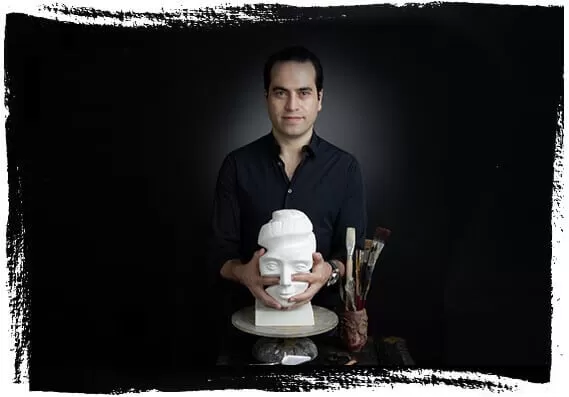
Botox is a treatment method preferred for many cosmetic and medical purposes. Here are some reasons why Botox is preferred:
Hyperhidrosis (excessive sweating): Botox is also used to solve the problem of excessive sweating. By preventing excessive activity of sweat glands, it can reduce the problem of excessive sweating of people.

Botox Procedure and Application Process
Botox treatment is a procedure that should be evaluated considering the situation in which it will be applied and the health status of the person. Therefore, Botox should always be performed by a specialized aesthetic doctor or specialist.
Botox application usually takes 10-20 minutes and it is possible to return to normal daily activities immediately after the procedure. In the first few days, mild swelling or redness may be seen in the treated area. The effect of Botox is usually noticeable within 3 to 7 days and the full effect occurs within 1-2 weeks. The duration of effect may vary from person to person, but usually lasts 3-6 months.
Botox Procedure Process:
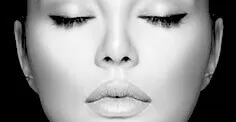
It is all possible with the technique called baby botox. Baby... Read more
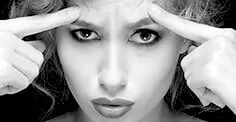
Botox, a purified bacterium, is used in plastic surgery. Read more
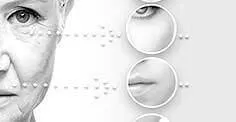
Preventative botox, that is, preventive botox against aging... Read more

Brotox is a special botox treatment for men. And the last... Read more
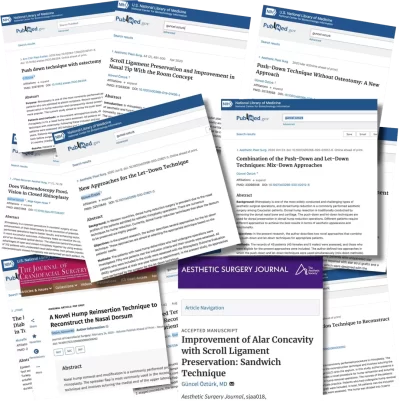
Botox Procedure Types and Usage Areas
Each Botox procedure is customized according to the needs of the person and the condition to be treated. Different types of Botox procedures vary according to the area of application and the purpose of treatment. Common types of botox procedures are as follows:
The Botox procedure is a treatment that usually lasts between 10 and 20 minutes and the healing process is quite fast. After the procedure, the person can usually resume daily activities immediately. However, slight swelling, redness or minor bruising may occur in the treated area. These reactions usually disappear within a few hours or a few days and the skin returns to normal.
Since Botox is a temporary treatment, the duration of effect may vary from person to person, but usually lasts between 3 and 6 months. When the duration of effect ends, the botox procedure can be repeated to maintain the desired result. However, since frequent application of Botox may cause the muscles used to become ineffective over time, the intervals of reapplication should be determined by a specialist.
Botox prices are usually calculated based on the cost per unit. Prices may vary according to the areas to be treated. For example, prices may differ for certain areas such as the forehead or around the eyes. Also, if more than one area of the face is to be treated with Botox, prices may increase accordingly. Prices may also vary depending on the botox brand and product used. Different brands may have different ingredients and concentrations, which also creates price differences.
When considering Botox treatment, it is important to consult a specialist doctor to get detailed information about the cost and process of the procedure. It should not be forgotten that Botox treatment must be administered by a qualified professional in order to be effective and safe.
Safety: Botox should only be administered by qualified and licensed healthcare professionals. The experience and reputation of the practitioner are decisive factors in the success and safety of the procedure.
Risks and Side Effects: Botox is generally well tolerated by most people, but some patients may experience side effects. These may include temporary swelling, redness, bruising, headache, or droopy eyelids. These side effects are usually short-lived and go away on their own. Rarely, more serious side effects such as infection or allergic reactions can occur. It is therefore important to be informed about the risks before the procedure and to have the procedure under the guidance of a specialist.
Botox and Skin Aging: Botox is mainly used to reduce dynamic wrinkles and fine lines, but it does not treat static wrinkles caused by skin aging. In addition to Botox, fillers, skin care or other aesthetic treatments can be used for static wrinkles.
Personalized Advice: Botox treatments should be customized for each individual. Creating a plan that is suitable for your facial structure and needs allows you to achieve natural and balanced results. For this, a detailed evaluation by an expert professional is very important.
In conclusion, Botox is an effective and safe treatment option. However, it is necessary to consult a specialized health professional for the correct application and to carefully follow the post-procedure care process.
Botox is a treatment involving botulinum toxin, a toxin produced by the bacterium clostridium botulinum. Botox is used to temporarily relax muscles and in this way helps to correct aesthetic problems such as wrinkles. To understand how Botox works, we can explain how the muscles react and the effect of Botox as follows:
Botox is used not only for aesthetic purposes but also in some medical treatments. For example, Botox can be applied in the treatment of conditions such as migraine, muscle spasms, excessive sweating (hyperhidrosis).
As a result, Botox usually treats dynamic wrinkles by affecting the moving muscles, while fillers compensate for volume loss and fill static wrinkles. These two procedures can often be used together to achieve a more youthful and vibrant appearance.
Botox is a treatment method that can be applied to various facial areas for aesthetic and medical purposes. The procedure helps smooth wrinkles and lines by temporarily relaxing the muscles. Here are the common areas where Botox is commonly applied and more details about each area:
Botox applications are planned individually to provide the most appropriate results. It is important to apply the right techniques and determine the appropriate dosage for each area. Botox should be applied by a specialist physician and requires a customized treatment plan according to the needs of each individual.
Botox application is generally not considered a painful procedure. However, since each individual has a different pain threshold, some people may experience mild discomfort during the procedure. The sensations felt during the procedure can usually be in the form of a pinprick or a slight burning sensation, but this discomfort is usually short-lived.
Botox injections are done with thin and short needles, which minimizes pain. Many people can easily undergo the procedure without the need for any anesthesia during the procedure. However, some patients may prefer to have local anesthetic cream or cooling applications applied to the procedure area, which can reduce the sensation of needle sticks.
After the procedure, there may be some mild swelling, redness or bruising at the application site, but these usually resolve in a short time and do not cause any serious discomfort. In general, Botox treatment is performed with minimal pain and discomfort and provides a quick recovery process.
The effect of Botox usually lasts between 3 and 6 months, but this period may vary depending on personal factors. The duration of the effect depends on factors such as the person's metabolism, age, characteristics of the treated area, skin structure and how active the muscles are.
While the effect of Botox reduces the appearance of wrinkles and lines by relaxing the muscles used in the body, the muscles begin to move again over time, which leads to the loss of its effect.
When the duration of the effect expires, a new Botox treatment is required to maintain the results. If the Botox procedure is repeated regularly, in some people the muscles may become less active over time and therefore the frequency of application may decrease.
Since the Botox effect is temporary, it is important to repeat the procedure periodically if you want to maintain your aesthetic goals for a long time. The natural and youthful appearance provided during the application is maintained with repeat application.
The general age limit for Botox is 18 years and older. However, it is common for botox applications for aesthetic purposes to start around the age of 30. This age group is usually the period when the first wrinkles appear and Botox is used to prevent these lines before they deepen.
Botox is generally used to alleviate the signs of aging and temporarily relax facial muscles, which is why the procedure is more common in people aged 30 years and older. However, some individuals who have mimic wrinkles at a younger age may want Botox at an earlier age, depending on genetic factors. This is usually determined by the evaluation of the specialist doctor.
The safe age for Botox is 18 years and over. However, especially people aged 65 and over should be carefully evaluated by a specialist doctor, taking into account their health status and age-related changes. It should be noted that Botox may require a customized treatment plan according to age-related physical changes and other health factors.
The healing process after the Botox procedure is quite fast and patients can usually return to their daily activities immediately. However, there may be some minor reactions after the procedure. Here is more detailed information about the healing process after Botox:
Early Days
First 24-48 hours:
Makeup and Daily Activities:
Long Term:
The Botox procedure usually offers a quick and practical healing process. However, it is important to consult a specialist doctor in case of any complications.
The Botox procedure usually takes between 10 and 20 minutes. The procedure is quite fast and since it is a minimally invasive procedure, patients can usually return to their daily activities immediately after the procedure. During the procedure
Since the Botox procedure is simple and fast, it can usually be performed as a "lunch break" procedure. After the procedure, patients can leave the clinic immediately without any hospitalization.
The effect of Botox usually starts to be noticeable within 3 to 7 days and the full effect occurs within 1-2 weeks. Relaxation of the muscles and reduction of wrinkles become evident in the first week, but full and permanent results are seen after 2 weeks.
The duration of its effect can vary from person to person, but in general, the effect of Botox lasts between 4 and 6 months. Over time, the muscles become active again and wrinkles or lines in the area to be treated may reoccur. As the effect wears off, it may be necessary to reapply Botox. Performing Botox regularly can help the muscles to move less over time, so the results can be more permanent in the long term.
Botox treatment can be repeated. Since the effect of Botox is temporary, it can be repeated at certain intervals according to the needs of the person. Generally, the effect of Botox lasts between 4 to 6 months, so the treatment can be renewed every 4-6 months. However, the duration of reapplication may vary depending on personal needs and the recommendations of the specialist doctor.
Some people prefer to repeat the treatment at regular intervals as the effect of Botox wears off. Regular Botox treatments can help maintain wrinkles on the skin for a longer period of time and may lead to less pronounced wrinkles over time. In consultation with a specialist, the most appropriate intervals and treatment plan can be determined.
Botox should not be used in some cases. These are the following:
As with any medical treatment or aesthetic procedure, it is important to have a detailed evaluation with a specialist doctor before Botox. In consultation with a specialist, it is possible to safely benefit from botox treatment.
Some important points to be considered and things to avoid after the Botox procedure are as follows:
After the Botox procedure, you can achieve the best results by carefully following the guidelines outlined by your specialist. The recovery process is usually quick and by following these simple rules you can minimize the risks of complications.


